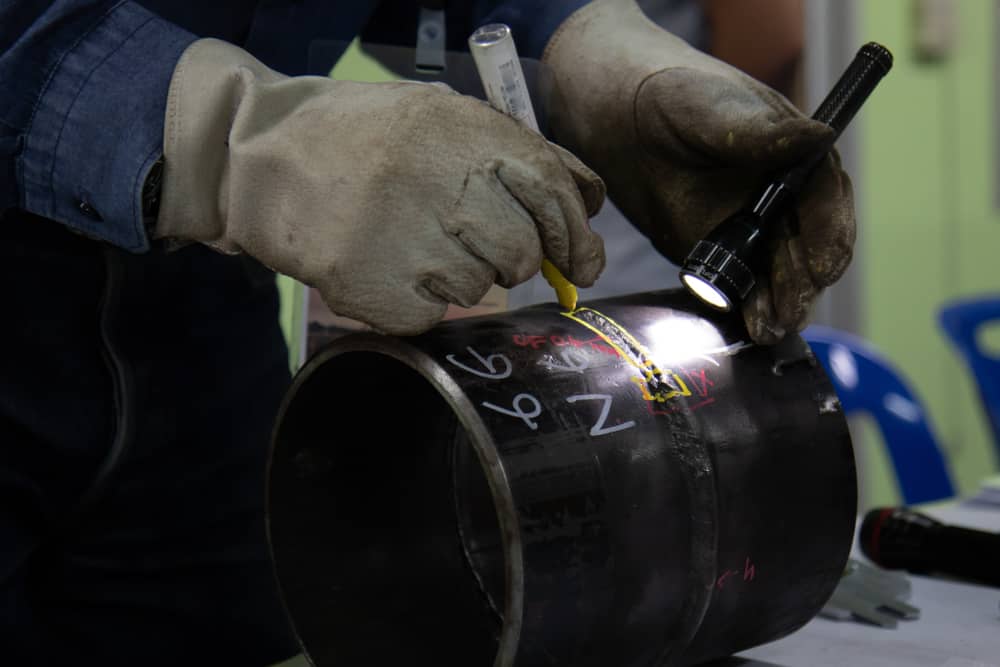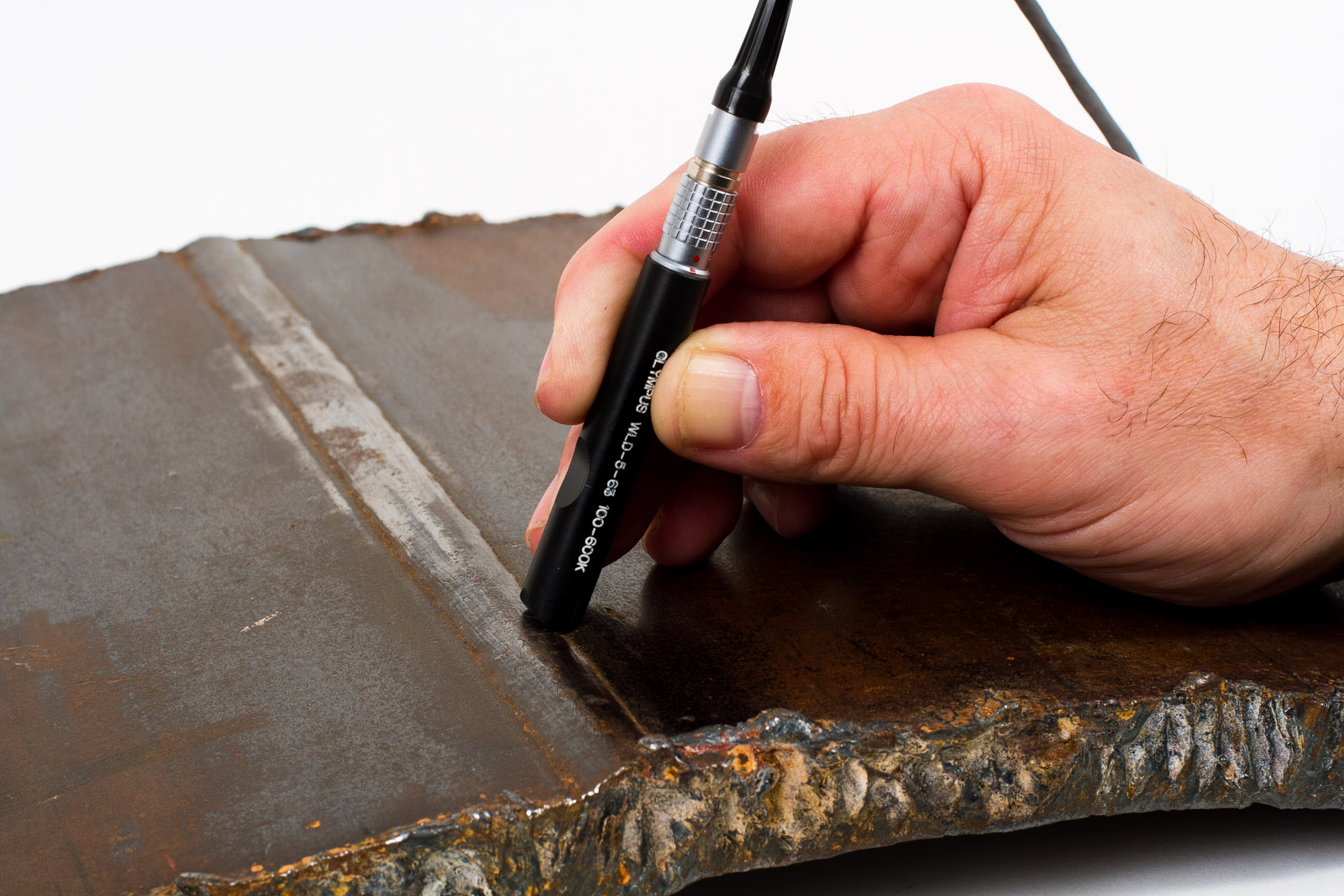Usual Obstacles in Welding Inspection Madison and How to Overcome Them
Usual Obstacles in Welding Inspection Madison and How to Overcome Them
Blog Article
Recognizing the Principles of Welding Examination to Guarantee Quality and Safety
In the realm of modern design, welding assessment stands as a keystone for making certain both the top quality and security of structural productions. The procedure includes a thorough analysis of welded joints, using innovative methods such as ultrasonic and radiographic screening to find concealed flaws. The experience of licensed inspectors is crucial, as they link the space in between academic standards and useful application. Their role expands beyond plain detection, incorporating the paperwork and communication of findings to appropriate stakeholders. What are the nuances of these assessment techniques that make them essential for keeping structural stability?

Value of Welding Examination
In the world of industrial manufacture, the significance of welding evaluation can not be overemphasized. Welding assessment plays an essential role in ensuring the integrity, safety, and durability of bonded frameworks. Offered the varied applications of welding in sectors such as building and construction, automotive, aerospace, and shipbuilding, the need for stringent quality control steps is vital. Appropriate assessment makes sure that welds satisfy specified standards and codes, which is essential for preventing structural failures that can bring about tragic effects.
The procedure of welding inherently involves intricate variables, including temperature, product residential properties, and environmental conditions, every one of which can influence the quality of the weld. A thorough examination determines defects such as fractures, porosity, and incomplete blend, which can jeopardize the toughness and dependability of the weld. By discovering these issues early, rehabilitative actions can be taken, consequently decreasing the threat of failure and linked costs.
Furthermore, welding examination adds to regulatory compliance, as several markets are controlled by strict security criteria and guidelines. Failing to abide by these guidelines can cause legal responsibilities and punitive damages. Ultimately, welding examination not only safeguards physical frameworks but likewise protects human lives and supports industry online reputations.

Trick Welding Assessment Methods
Although welding assessment is important to guaranteeing the top quality and security of bonded frameworks, it is the certain techniques employed that determine the performance of the assessment procedure. Secret welding evaluation approaches can be generally classified into non-destructive screening (NDT) and harmful testing.
Ultrasonic and radiographic screening are advanced techniques that enable inspectors to analyze the interior integrity of the weld. Ultrasonic screening makes use of high-frequency sound waves to discover discontinuities, while radiographic screening uses X-rays or gamma rays to produce a photo of the weld's inside. Magnetic bit screening and fluid penetrant screening are surface area evaluation approaches utilized to find surface and near-surface imperfections. In contrast, devastating screening methods include physically breaking or cutting the weld to evaluate its mechanical properties. These extensive assessment techniques ensure that welds fulfill market standards and safety demands, thereby making certain architectural stability and efficiency.
Duty of Certified Inspectors
Licensed inspectors play an essential role in the welding evaluation process, guaranteeing that all welds abide by strict sector criteria and security laws. Their proficiency is essential in determining problems or irregularities that might endanger the architectural honesty of a weld. By meticulously analyzing each weld, certified inspectors help prevent possible failures that could lead to expensive repairs or unsafe accidents.
To end up being certified, inspectors should undergo strenuous training and testing, which familiarizes them with various welding techniques, products, and screening approaches. This comprehensive understanding enables them to review weld high quality efficiently and make informed judgments concerning their safety and security and dependability. Furthermore, certified inspectors excel in translating specifications and plans, making sure that the welding job straightens with the project's layout demands.
An essential component of their duty is to record their findings completely, offering a detailed document of the evaluation process. This documentation is critical for traceability and liability, working as an official document of compliance with industry standards. Certified examiners also play a key function in promoting interaction between task stakeholders, using referrals and understandings to boost welding methods and outcomes. Their payment is essential in preserving high levels of high quality and safety in welding procedures.

Devices Utilized in Welding Evaluation
Welding assessors depend on a variety of specialized tools to execute their responsibilities properly, guaranteeing each weld satisfies the necessary requirements. Amongst these devices, aesthetic evaluation aids like amplifying glasses and mirrors are basic, permitting inspectors to closely examine welds for surface area issues such as fractures, porosity, and undercut. Calipers and fillet weld evaluates are necessary for measuring weld dimensions to validate conformity with style requirements.
Advanced tools extend beyond aesthetic aids, including non-destructive screening (NDT) tools. Ultrasonic screening devices are essential in detecting subsurface defects, using acoustic waves to disclose internal suspensions without jeopardizing the weld's integrity. In a similar way, radiographic screening employs X-rays or gamma rays to capture pictures of a weld's interior, highlighting prospective issues.
Magnetic bit screening is another important device, especially for spotting surface area and near-surface discontinuities in ferromagnetic products. By applying electromagnetic have a peek here fields and ferrous fragments, inspectors can identify imperfections that could otherwise be undetectable.
Dye penetrant evaluation is typically made use of for non-ferrous products, giving a contrast-enhanced aesthetic check for surface-breaking issues. Welding Inspection Madison. With each other, these tools make it possible for welding examiners to adequately assess weld high quality, guaranteeing safety and reliability in numerous applications throughout markets
Making Certain Architectural Integrity

Welding treatments should stick to recognized standards and codes, such as those specified by the American Welding Culture (AWS) or the International Organization for Standardization (ISO) These standards guarantee go to this website that the welds can withstand environmental aspects and operational tensions. Certified and certified welders play a crucial role in this process, as their experience makes websites sure that methods are applied properly, reducing problems such as cracks, porosity, and incomplete fusion.
Post-weld assessment is an additional important element of confirming architectural honesty. These examinations validate that the welds meet the required high quality requirements, supplying guarantee of their toughness and integrity.
Conclusion
The fundamentals of welding inspection are essential for keeping the top quality and safety and security of bonded structures. By executing key inspection approaches, such as aesthetic evaluations and non-destructive testing, potential defects that can jeopardize structural honesty are recognized. Licensed inspectors are critical in making certain conformity with market standards and efficient interaction among stakeholders. Using specialized devices additionally enhances the inspection procedure, ultimately safeguarding human lives and extending the lifespan of bonded buildings.
Welding examination plays an important role in making sure the integrity, security, and long life of welded frameworks.Although welding examination is vital to making certain the high quality and safety and security of welded frameworks, it is the particular techniques used that identify the efficiency of the inspection process. Secret welding examination methods can be broadly categorized right into non-destructive screening (NDT) and destructive testing.Certified inspectors play an essential duty in the welding inspection process, guaranteeing that all welds conform with rigorous sector standards and safety guidelines.The principles of welding examination are essential for maintaining the top quality and safety of welded structures.
Report this page